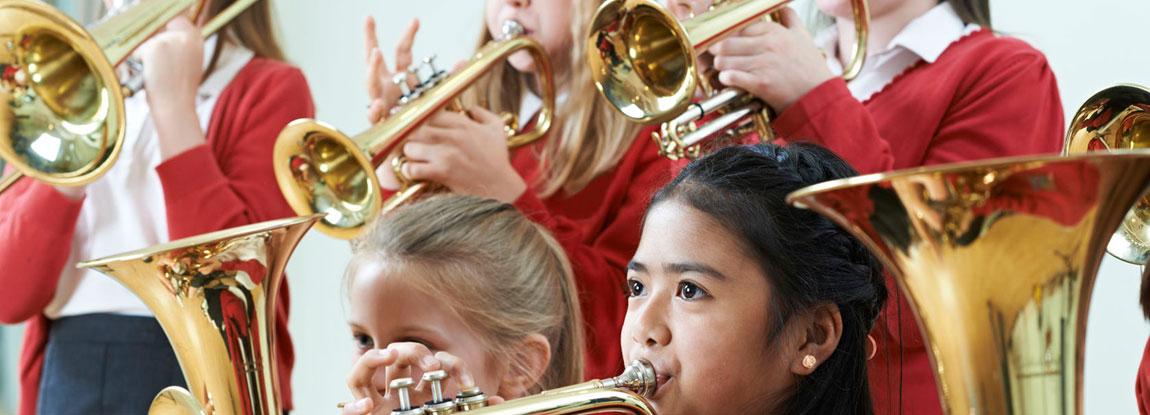One of the keys to having a good brass sound is to also have a good air stream. We spoke with Dr. Ramon Vasquez, assistant band director at Lopez High School in Brownsville, Texas to get some tips on encouraging proper breath support in young musicians. As one would expect diagnosing the problem is his first step. Says Vasquez, “I begin by listening for the quality of the sound. If it is small and not as resonant as it could be, I look into how much of their capacity they are really using. I then start some exercises
to get them to expand that capacity by making the breath constant from beginning to end. More often than not if I tell kids to take in more breath some will eventually feel light headed. I let them know that that’s a good thing because they are getting more air into their body than what they are used to.”
To actually teach the techniques to develop a good, solid air supply Vasquez relies heavily on the many techniques and exercises shown in the book and video titled The Breathing Gym by Sam Pilafian and Patrick Sheridan. “We use a lot of their exercises on a daily basis. Exercises like Flow Monitor, Flow Awareness, and Variations on Inhalation and Exhalation .” These flow exercises serve to help the student become more aware of their true lung capacity and, over time, become a natural part of how they breathe and blow while playing.
Vasquez also makes use of some of physical stretching and other physical tools as a student becomes more experienced. “With individuals I will use a 4 inch long breathing tube made from ¾ inch diameter plastic tubing and have them use that when they breathe in. Almost immediately they will notice that they can get more air into their body when they use the tube which will make their oral cavity feel more open.” A similar method (if they do not have a breathing tube) is to place the index finger against the lips and open their mouth to the distance between two knuckles to help them obtain a more open oral shape. “We also utilize stretching of the torso through trunk twists and side bends while breathing to help them get a bit more room internally to breathe.”
You can use these same techniques with ensembles as well and they almost always result in an improved ensemble sound. Vasquez continues, “In an ensemble situation, I utilize the same flow monitor exercises that I do with individuals. Taking a few moments to remind ourselves to use our air properly will help to improve the overall sound quality of the ensemble. The music will flow from the students thus making the end result that much better.”
For some students the idea of breathing in this way can lead to bad habits though if not kept in check. Says Vasquez, “The breath needs to be constant and consistent in terms of flow from beginning to end. I tell them that “Tension is a tone killer.” It isn’t a contest to see how long you can go on the breath, but instead it’s how efficiently you move the air through the body. They should never go to the point where they are squeezing or collapsing their body in order to maintain the air stream. Stay relaxed and focus the air to a steady stream. Keep the body on top of itself and use the air to make your music come alive.”
